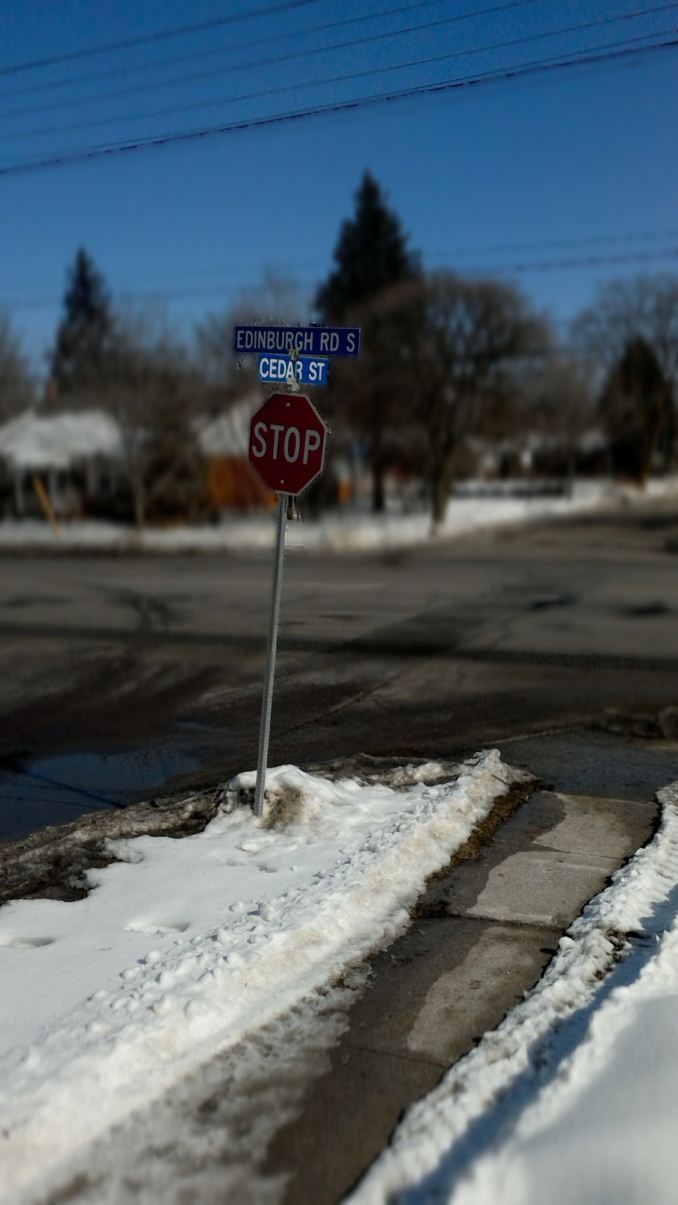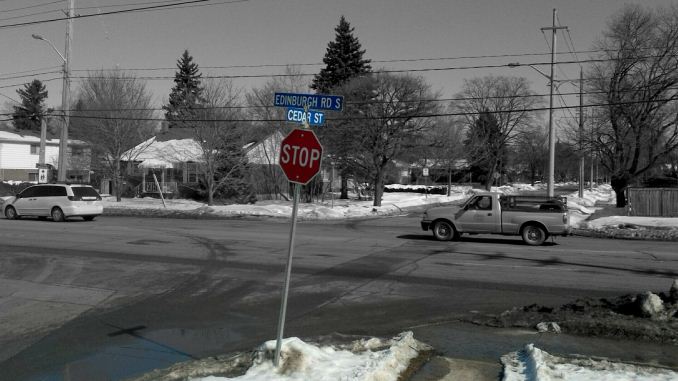The Dell Venue 8 7000 Series Review
by Brandon Chester on March 12, 2015 8:00 AM EST- Posted in
- Tablets
- Dell
- Android
- Mobile
- Venue 8 7000
Camera
While the act of taking photos or shooting video with a tablet is seen as ridiculous by many, there are a number of people who use a tablet as their primary camera. I know of several people who, due to aging eyesight, love how the iPad acts as the biggest ever camera viewfinder. Tablet cameras can also be essential for the functionality of certain applications like Coach's Eye. Because of these and other reasons, it's important to put a reasonably good quality camera on a tablet.
| Camera Specifications | |||
| Dell Venue 8 7840 | |||
| Front Camera | 2.4MP (1920x1080 effective) |
||
| Front Camera - Sensor | IMX132 (1.12 µm, 1/6.95") |
||
| Front Camera - Focal Length | 3.69mm | ||
| Front Camera - Max Aperture | F/2.2 | ||
| Rear Camera | 8.0MP (3264x2448) |
||
| Rear Camera - Sensor | OV8858 (1.12 µm, 1/4") |
||
| Rear Camera - Focal Length | 2.94mm | ||
| Rear Camera - Max Aperture | F/2.4 | ||
At first glance, Dell's camera application appears to be fairly basic. The large camera button on the right takes the photos, the arrow next to it opens the menu to switch between the different camera modes, and the buttons below those are for the timer, front camera, and scene preset respectively. Once a user taps on the gear button on the left side, they're presented with several more options that give much finer control over the camera. There are controls for exposure bracketing, ISO, white balance, and a few other settings. One of the most important to change is the picture size setting, which for some reason is set to a 16:9 crop by default, despite the fact that the OV8858 is a 4:3 sensor.
Unfortunately, the camera results from the Venue 8 are less than stellar, even with extremely generous lighting that could rarely be achieved in the real world. When driving the sensor at base ISO there's still significant noise in the image, and the entire scene appears washed out. It almost looks like some sort of desaturation filter was applied overtop of the image. I was honestly surprised by how far the camera quality lags behind the iPad Air 2 that has the same sensor size and resolution.
The Venue 8 does use a narrower F2.4 aperture than the iPad at F2.2, but the issues in images aren't a result of the sensor being unable to capture enough light. Obviously the quality of a camera can't be determined just based on its resolution and sensor size, but such a large difference is also hard to imagine when those specifications are the same on two different devices. Mobile image signal processors are still black boxes, and so it's really impossible to say whether the Venue 8's disappointing results have more to due with the image processing or the sensor itself.
The other side of the Venue 8's camera experience is Intel's RealSense technology. In addition to the 8MP rear camera, there are also two "720p" cameras that are separated by 8cm and capture images to determine depth information about the objects in the scene being photographed. I wasn't able to get any information about the exact sensors used for the depth capture, and I suspect they're hidden behind the OV680 ISP that the Venue 8 uses.
Dell and Intel state that objects should be between three and thirty feet from the cameras for accurate depth information to be recorded. This allows for some neat post-processing tricks like adjusting focus, depth of field, and adding filters only to the background or foreground of a photo. These adjustments are all made within Dell's built in gallery application.
Above you can see an example of the ability to measure the distance between two points. In my experience the distances measured could be accurate, but there could also be very odd anomalies. My actual measurement of the distance between those two buildings was a little over 28 feet, and so while the top line gave an accurate measurement, the bottom one was completely wrong.
The ability to adjust focus and depth of field is similar to what HTC can do on the One (M8). Unfortunately, I could never get it to work really well. The above examples are the best I was able to do, and you can see that there's significant artifacting around the edges of the signs. In many other photos, the metal post would be blurred along with the background.
What's also frustrating is that the RealSense depth cameras are 16:9 sensors, and the main camera needs to be cropped to have the same aspect ratio for the technology to work. This means that RealSense photos are a lower resolution than normal images, and use a very long and narrow aspect ratio that cameras have typically avoided for that very reason. I don't see any technical reason for why the depth sensors couldn't have the same 4:3 aspect ratio as the main camera.
The last feature that RealSense enables is one that builds on top of the ability to adjust focus. Essentially, you can apply certain filters to areas that are in focus or out of focus. This allows for images like the one above to be created, where the object of focus is excluded from a filter or is the only object that a filter is applied to. In the above example, you can see that the red stop sign and blue street signs are in color, while the background objects have a black and white filter applied to them. It's difficult to pull this off perfectly, as it relies on the accuracy of the depth information of the photo, but it's still a neat effect that can be done much quicker than it would be possible to do in Photoshop.
Overall, I think the RealSense portion of the Venue 8 has potential, but it does need some tuning. It's let down by the generally poor quality of the rear camera, and I hope I can revisit RealSense again on a device with a bit more focus on camera quality along with depth cameras that have the same aspect ratio as the main camera. There's also room for adjustments to the algorithms used in future updates, and so these results may get better as time goes on.
WiFi
The Venue 8 has an LTE variant, but most tablets operate purely over WiFi. Since content consumption is a huge part of how tablets are used, it's important to have good WiFi performance. The Venue 8 uses the 802.11ac version of the Intel 7260 WiFi + BT 4.0 module in a single spatial stream configuration. This allows for a maximum WiFi speed of 433Mbps, although real world results will be lower due to various technological and environmental factors.

The Venue 8 does well in our WiFi test, although its performance isn't at the same level as some competing devices with 2x2 802.11ac implementations like the Galaxy Note 4 and Nexus 9. For a 1x1 802.11ac implementation its score is exactly where you'd expect it to be. During testing, I encountered a strange bug where the device would always revert to only operating on the 2.4GHz band, which limited the maximum WiFi speed to 72Mbps. Thankfully, a reset of the device fixed the issue and it hasn't resurfaced since.
Misc
We don't yet have any in-depth audio tests, but there were no apparent issues with the audio quality of the Venue 8 which uses Cirrus Logic's WM8958 audio codec. There are also two of NXP's TFA9890 amplifiers present to drive the stereo speakers. Other hardware components include NXP's PN544 NFC controller, and the previously mentioned Omnivision OV680 image signal processor.





_thumb.jpg)
















89 Comments
View All Comments
Drumsticks - Thursday, March 12, 2015 - link
Indeed. I haven't noticed a slowdown on any of my devices, including a surface Pro 1 and a 4570k based PC.Sushisamurai - Sunday, March 15, 2015 - link
Ditto, IPad Air 2, iPad retina mini, ivy-bridge i7-U, my mother of a desktop, iPhone 4S and even my Nokia 830 run this fine. :(Ryan Smith - Thursday, March 12, 2015 - link
If you could please email me some screenshots of the ads in question, I will have it looked it.http://www.anandtech.com/Author/85
damianrobertjones - Thursday, March 12, 2015 - link
Read the specs, all sounded good, until I reached "Android 4.4.4 KitKat".Oh well.
Michael Bay - Thursday, March 12, 2015 - link
You should have stopped at Android.Michael Bay - Thursday, March 12, 2015 - link
Android?Jesus, what a way to kill a perfectly fine hardware mix.
Azurael - Thursday, March 12, 2015 - link
They make a Venue 8 Pro if you want to run Windows/Linux... Pretty dull looking, but at least it doesn't have stupid bezels.Azurael - Thursday, March 12, 2015 - link
If anybody wants a point of comparison with a Haswell-Y tablet, my i3 4020Y-based Dell Venue 11 scores the following running an Android-x86 5.0.2 build from a few days back (it's an x86_64 kernel w/ 32-bit userspace):Kraken 1.1 - 2741.8ms
Octane 2.0: 10668
WebXPRT kills Chrome for some reason (as does one of Vellamo's benchmarks) - I'm assuming that's something to do with the MESA/i915/Android interaction that Android-x86 creates. It worked under 4.4 and 5.0 is unofficial and buggy ATM.
BaseMark OS 2 hates this thing:
Overall: 1361
System: 1893
Memory: 1486
Graphics: 1572
Web: 776
And I know AT don't use it, and it's not exactly known for accuracy and consistency but AnTuTu 5.6.1: 50757
There's a lot of optimisation to be done, and it'd be nice to get 64-bit userspace working... But if Intel's slowest Haswell dual core can do that, think what the higher spec devices could do!
Kidster3001 - Wednesday, April 1, 2015 - link
Basemark OS2 for Android scores incredibly poor on all x86 devices. I don't recommend it as a benchmark for Android.darkich - Thursday, March 12, 2015 - link
"With generational improvements to their processors, it's not hard to imagine Intel becoming a major performance leader in the mobile space"In your dreams?
How in Earth will Intel even come remotely close to achieving that in the light of Tegra X1, Exynos 7420, and upcoming army of Cortex A72 based chips?!?
Wow, their newest Atom- built on a superior process to any of the compared chips, some of which being more than a half year old - held its
ground in CPU, and got owned in GPU tests.
I'm amazed at how your Intel has can translate that into some kind of promising prospect for Intel.
Wake up and see that in reality, Intel IS FAR BEHIND, and has nothing to counter the upcoming ARM chips.
The next Atom is basically a die shrink of Silvermont, and should be absolutely demolished by 14-20nm chips with Cortex A72 and Kryo CPU cores.